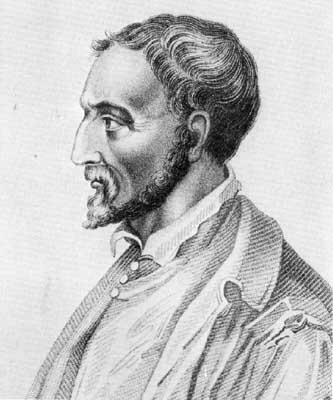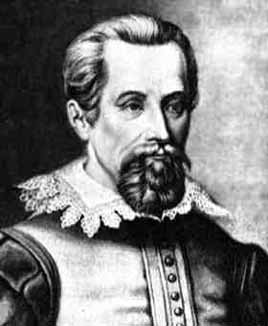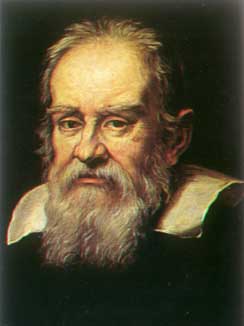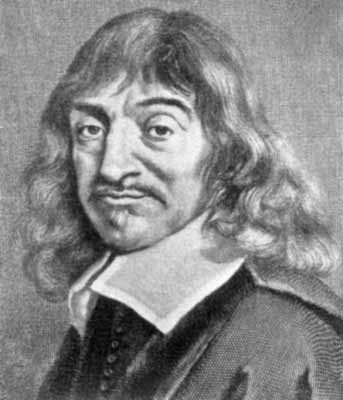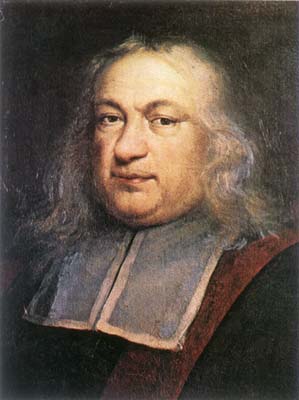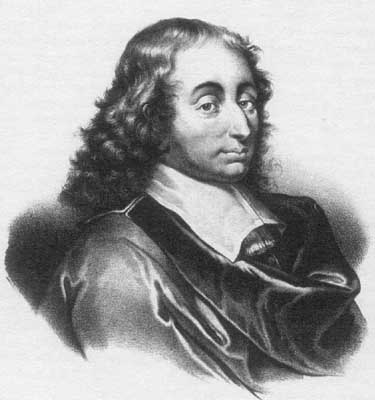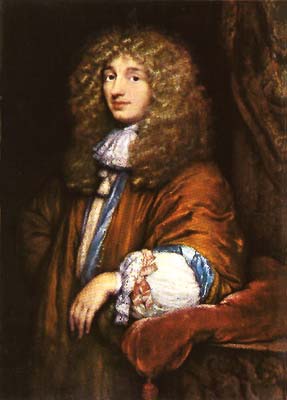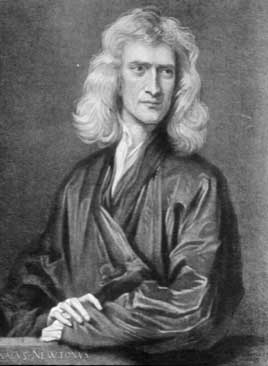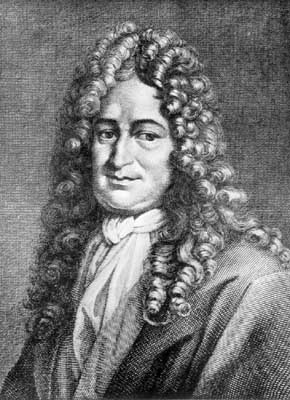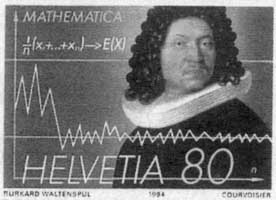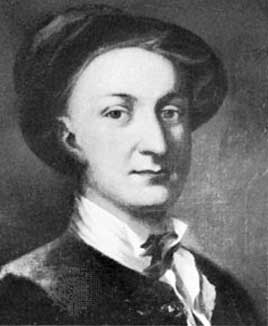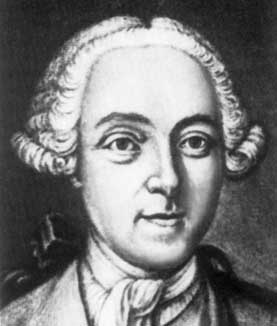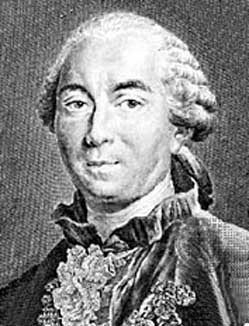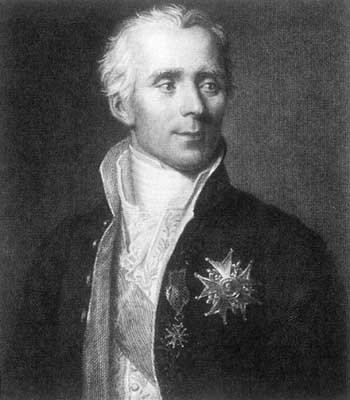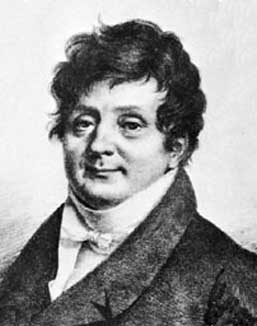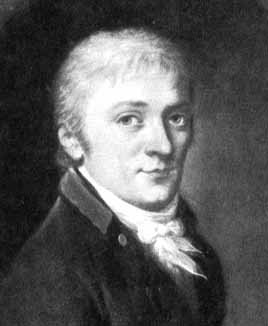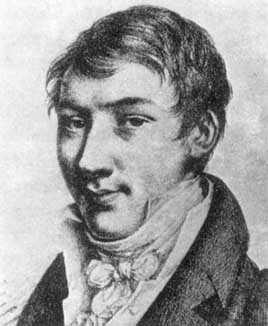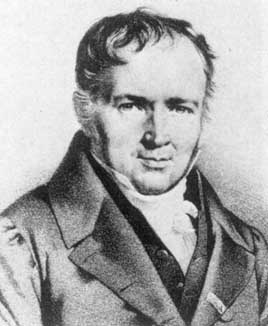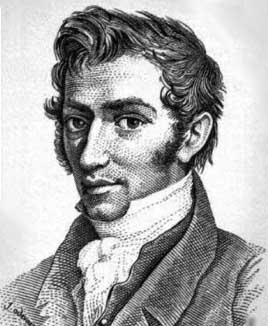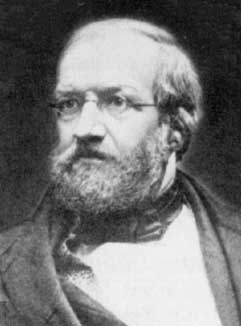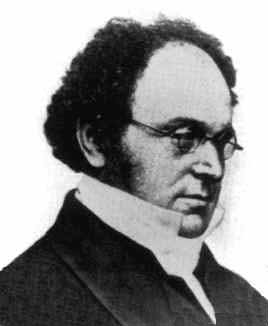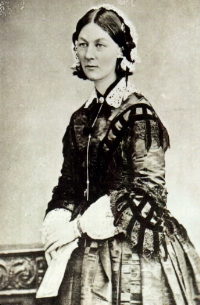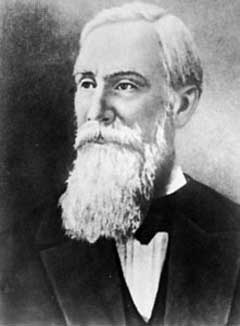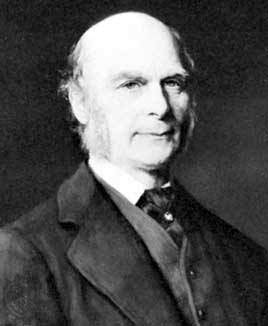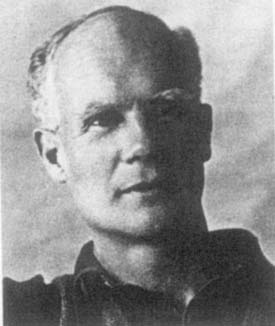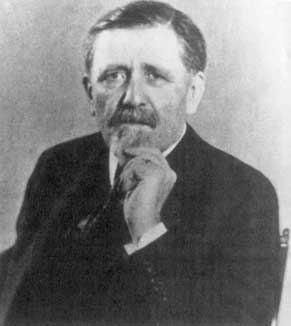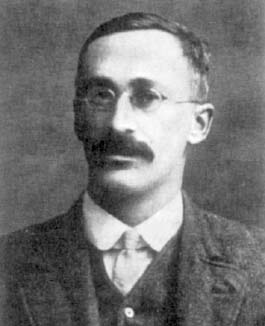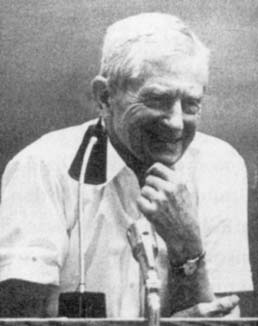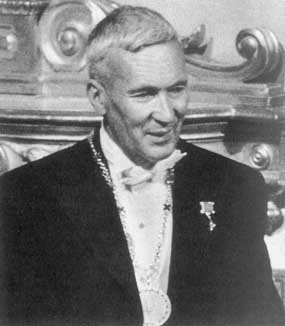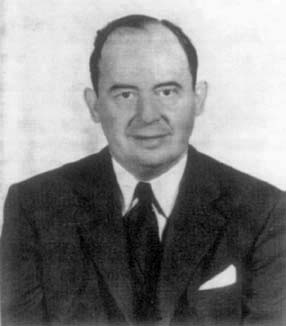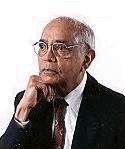Girolamo
Cardan
|
1501-1576 |
Cardan, was a renowned Italian medical doctor and instructor in Mathematics. He wrote a treatise entitled DeLudo Aleae (Book on Games of Chance) (1550), which was not published until 1663. In this treatise, Cardan, who was also an avid gambler, presented some ideas of basic probability applied to games of chance using dice. This is the first historical record of probability theory. Some of his other mathematical contributions were Ars Magna (Great Art) on Algebra, which gave solutions to the cubic and quartic equations and Practica arithmetica et mensurandi singularis (Practice of Mathematics and Individual Measurements) (1539). |
Johannes Kepler
|
1571-1630 |
Kepler, an astronomer born in Germany, published a work entitled De Stella Nova in pede Serpentarii (1606). In this work, Kepler addressed the appearance of a new star, a supernova, and also results of tosses of dice. Kepler's major scientific contributions were in astronomy and optics. He discovered three major laws of planetary motion, he provided an explanation of the mechanics of vision, discovered how light works in a telescope, found new geometric figures, and more. The entirety of his works can be found in Gesammelte Werke and in Johannis Kepleri Astronomi Opera Omnia. Kepler suffered many hardships in his life, including the death of one wife, at least six children, and his mother being tried for witchcraft, a trial lasting from 1615-1621 when she was finally exonerated. |
Galilei Galileo
|
1564-1642 |
First published in 1718, and written by the Italian, Galileo, Considerazione sopra il Giuco dei Dadi contains work on a problem posed by a friend concerning how often the numbers 9 and 10 occur when summing the tosses of three dice. Galileo is best known for his work in astronomy, motion, and the invention of a high powered telescope. His invention of the telescope allowed him to make many new discoveries concerning the moon, sun, planets, and the universe. He was an advocate of the Copernican theory and for this was in constant threat from Rome and an Inquisition. In 1633, he was finally sentenced to life imprisonment for his support of the Copernican system in the book Dialogo sopra i due massimi sistemi del mondo, tolermaico e copernicano (Dialogue Concerning the Two Chief World Systems, Ptolemaic & Copernican). This sentence actually resulted in his spending the rest of his life in a villa near Arcetri. |
Rene Descartes
|
1596-1650 |
Descartes was a French philosopher, mathematician, lawyer, and scientist. He is famous for his quote, “I think therefore I am” which he considered to be a self-evident truth. Descartes broke from the traditional ways of thinking to establish a new system, which is based on logical reasoning. This deductive way of thinking encompassed all that he did. He is considered to be the father of the modern school of Philosophy and the first of the modern school of mathematics. Of his many writings are Discours de la Methode (1637)(Discourse on Method), written in French, and Regulae ad Dirctionem Ingenii (Rules for the Direction of the Mind). In these publications, Descartes outlined steps implementing mathematical procedures in the reasoning process. |
Erycius Puteanus |
|
In 1617 Puteanus’ book, Erycii Puteani Pietatis Thaumata in Bernardi Bauhusii e Societate Jesu Proteum Parthenium was published. This book illustrates some, but not all, of the combinations of the sentence Tot tibi sunt dotes, Virgo, quot sidera caelo (referring to the Virgin Mary). |
Pier de Fermat
|
1601-1665 |
Pier de Fermat, an Italian lawyer, co-established the theory of probability in 1654 with Blaise Pascal. (See Pascal below) Fermat is held in high regard, along with Rene Descartes, as one of the most important and influential mathematicians of the early 17th century. He is remembered not only as the co-founder of probability theory, but also for his work in analytic geometry and number theory. |
Frans van Schooten
|
1615-1660 |
Tutor to Huygens, Schooten of Dutch descent published a treatise entitled Francisci a Schooten Exercitationum Mathematicarum Libri quinque, which included Huygen’s De Ratiociniis in Ludo aleae, and commented on combinations and applications of combinations. |
John Graunt |
1620-1674 |
Graunt, an English shopkeeper, in the paper “Natural and Political Observations Made upon the Bills of Mortality” presented the first known application of compiled data in the process of making statistical inferences. |
Blaise Pascal
|
1623-1662 |
While corresponding through a series of letters with Pierre de Fermat in 1654, (which were published 1679) Pascal, an eccentric French mathematician, laid the foundation of the theory of probability. The letters addressed gambling problems posed by a friend and avid gambler, Chevalier de Mere. In 1819 Pascal published the first treatise on combinations. Pascal proved to have great mathematical capabilities while very young. His father was adamant that Blaise not be taught mathematics, but by the age of 12, he had solved, independent of any outside sources, some of Euclid's elements. Upon this achievement, his father relented and began his education in Mathematics. He wrote his first paper at the age of 17 entitled Essai pour les coniques on conic sections. Pascal also invented the first calculator or digital counting machine, called a Pascaline. He is renowned for the Pascal triangle and his work on binomial coefficients. Pascal made many more scientific contributions,inventions, and discoveries, but he was constantly torn between science and religion, and the path to follow. |
|
1629-1695 |
Huygens, who was of Dutch descent, wrote De Ratiociniis in Ludo Aleae(1657), presenting fourteen propositions on the calculus of probability. |
|
John Caramel |
1606-1682 |
John Caramel, a theologian of the Jesuits, born in Spain,
published Mathesis Biceps (1670) in which he used examples to give the
first illustrations of combinations.
He also wrote a treatise, Kybeia, quoe combinatoriae genus est, de
Alea, et Ludis Fortunae serio disputans, which was a work on chances. |
Isaac Newton
|
1642-1727 |
Isaac
Newton, an English pysicist and mathematician, stated, without proof, the
binomial therorem. He published Philosophiae
Naturalis Principia Mathematica (1687).
This is one of the most important contributions to the field of
science. This work was revised by
Roger Cotes in 1713 and later translated into English by Andrew Motte. In 1704, Newton published Opticks in
which he revealed unique discoveries on the properties and characteristics of
light. |
Gottfried von Leibnitz
|
1646-1716 |
Of Saxon descent, Leibnitz at the age of twenty published Dissertatio
de Arte Combinatoria (Dissertation on the combinatorial art)(1666) in
which he addressed combinations applying Pascal’s Arithmetical Triangle,
permutations, and philosophical discussions from a mathematical point of
view. Leibnitz also introduced some
original and interesting notation for combinations and mathematical
computations. In Acta Eritorum Leibnitz (1690) he provided solutions
to the problems presented by James Bernoulli in the Journal des Scavans (see
James Bernoulli below). |
Sauveur |
|
Sauveur presented a work in Journal des Scavans (1679), which provided formulas for the game of Bassette. This gained him admittance to the King and Queen in order to explain his formulas. |
James (Jacob) Bernoulli
|
1654-1705 |
In Acta Eruditorum (1690), James Bernoulli, who began a long list of Mathematical contributions provided by the Bernoulli family, divulged solutions to a problem that he posed in the Journal des Scavans for 1685. The problem, as found in Todhunter’s Theory of Probability, is as follows: “ A and B play with a die, on condition that he who first throws an ace wins. First A throws once, then b throws once, then A throws twice, then B throws twice, then a throws three times, then B throws three times, and so on until ace is thrown”. “The chances involve infinite series which are not summed”. Bernoulli also wrote Ars Conjectandi, which was not published until 1713, eight years after his death. In Ars Conjectandi Bernoulli gave explanations and original proofs of the propositions introduced in Huygen’s De ratiociniis in Ludo Aleae. He also included combinations and permutations, which are still employed today, along with a series of problems on games of chance, and most importantly the Bernoulli theorem and a proof of the Binomial theorem. |
John Arbuthnot
|
1667-1735 |
John Arbuthnot from Scotland published Of the Laws of
Chance (1692), which was the first publication on probability to be
written in English. It also included a translation of Huygen’s work and
applications to games of chance.
Arbuthnot also published An argument for Divine Providence, taken from
the constant Regularity observ’d in the Births of both Sexes (1709). This work discusses the chance of a
male or a female being born, and the probability of more males being born in
a succession of years. |
|
|
Roberts’ An Arithmetical Paradox, concerning the chances of Lotteries (1693) addresses chances in lotteries where there are equal expectations but unequal odds. |
|
John Craig |
1663-1731 |
Craig, a mathematician from Scottland, published Theologiae
Christianai Principia Mathematica; a calculation of the Credibility of Human
testimony (1699) (written anonymously) in which he tried to apply
probability to moral matters, such as the validity of the Gospels. |
|
1678-1719 |
Montmort, a wealthy Frenchman, published his work, Essai
d’Analyse sur les Jeux de Hazards (1708), on Chances. It included the theory of combinations,
games of chance using cards and dice, solutions to chance problems and to
some of Huygen’s problems. |
|
Nicholus Bernoulli |
1687-1759 |
Nicholus Bernoulli, from Switzerland, published Specimina Artis conjectandi, ad quaestiones Juris applicatae(1709). In this work, Bernoulli discusses probabilities of topics concerning human life, death, annuities on life, and length of life. He also addresses problems relating to lotteries, testimonies, and innocence. |
|
1667-1754 |
Abraham
de Moivre, born in France but spent most of his
adult life in England, published De Mensura Sortis, deu, de Probabilitate
Eventuum in Ludis a Casu Fortuito Pendentibus (1709). This work is comprised of 26 problems
relating to games and circumstances of chance. De Mensura Sortis was expanded to become
The Doctrine
of Chances: or, a Method of Calculating the Probabilities of Events
in
Play. |
|
|
1682-1716 |
In 1722, after his death, the Englishman, Roger cotes was recognized for his work in which he suggested that astronomers and navigators use a weighted mean to combine observations and measurements to arrive at an estimate. This proposal can also be considered as an early insight to the method of least squares. |
|
|
1702-1761 |
Thomas Bayes, an Englishman, was a nonconformist minister. He is well known for Baye’s Rule, Baye’s estimator, and Baye’s risk. Although no papers were published under his true name until after his death, he initiated the idea of reasoning from specifics to generalities in probability theory. After his death, Essay towards solving a problem in the doctrine of chances (1764) was published from which we get Bayesian estimation. |
|
|
1707-1783 |
Leonhard Euler, a Swiss mathematician, has been considered one of the most influencial mathematicians of the 18th century (as was Lagrange). Euler made many contributions to mathematics as well as introducing the beta and gamma functions, which are widely used in statistics today. |
|
|
1707-1788 |
Georges Buffon, a naturalist from France, adamantly opposed to gambling, published an essay Essai d’Arithmetique Morale (1777). In this essay, Buffon discusses different categories of truths, argues that the amount that one can lose is too great to consider playing a game of chance, expounds on the Petersburg Problem (This is a problem in which two players are tossing a shilling. The first player tosses the coin, and if the result is a head the second player owes the first player a shilling. If the toss results in a tails, the first player tosses the coin again, but on the occurrence of a head on this toss, the second player owes the first two shillings, and so on, increasing the number of shillings owed.), and applies geometry and integral calculus to problems involving probabilities. Buffon supported many of his claims through extensive experimentation, such as tossing a coin thousands of times, and throwing a rod (needle) or a cube onto a tiled surface in order to calculate the probability that the rod or the cube will land so that it is touching one of the lines. Buffon used the results of these experiments to estimate p. He also did much work on Mortality tables in which he considers the duration of life. |
|
|
1749-1827 |
Laplace, born in France, can be said to have made the most influential impact on the advancement of probability (as well as in other areas of science) in history. Laplace published Theorie analytique des Probabilites (1812) in which he included many of his previously published memoirs and new ideas on probability. This was used as the model text for advanced probability during the 19th century, and has been referred to as “one of the most splendid works of the greatest mathematician of the past age.” Some of the topics addressed in his memoirs concerning probability are problems considering the duration of play, problems involving lotteries, randomly choosing an even or odd number from a “heap of counters”, the first known work on estimating the probabilities of the causes that could have effected an observed event, problem of points involving two or three players (This is a popular problem which addresses the number of points that should be awarded to each participant when a game is abandoned prematurely), the mean of a collection of observations, the result of repetitions with a loaded die or coin, chances involving weighted die, chances of winning on the nth trial, probability of a male birth being greater that 0.5, approximating definite integrals - which contributed greatly to the advancement of probability, generating functions, evaluation of binomial coefficients, necessary size of samples to make inferences about a population with a small degree of error, slopes of the orbits of planets and comets, making inferences based on observations, voting, insurances, the illusion of correlations which do not exist, the theory of errors, the probability of an event occurring n successive times, probability of a participant arriving at n successes before the other, sampling with replacement, the range of the sum of errors, limits for the occurrence of a particular event with success probability, p, in n trials, method of least squares, causes of excesses, solution to Buffon’s problem, probabilities concerning mortality and the effects caused by diseases, mean length of marriage. One of Laplace’s significant contributions to the theory of probability was the Central Limit Theorem, which he presented in 1810, and which provided the necessary tool to solve the method of least squares. |
|
|
1752-1833 |
Legendre, was a Frenchman and became the first to publish the method of least squares in Nouvelles methods pour la determination des orbites des cometes (1805). Guass later attributed this discovery to his own credit, much to the dismay of Legendre. This method, which uses existing data to fit a curve, was quickly adopted and employed in many fields, especially astronomy and geodesy. In 1811, Legendre published the first of a three volume work entitled Exercises du Calcul Integral in which some characteristics of the beta and gamma functions were presented. |
|
Jean Baptiste Joseph Fourier |
1768-1830 |
Jean
Baptiste Joseph Fourier
was born in France and had several interesting encounters during the French
Revolution, such as being arrested twice and barely escaping the guillotine.
He studied under Lagrange, Laplace, and Monge at the Ecole Normale in Paris. He was the scientific advisor to Napolean
when he invaded Egypt, and became stranded there when the French fleet was
destroyed in the Battle of the Nile.
He helped found the Cairo Institute and worked in the Mathematics
division. This is where he first
began to work on his famous Fourier series.
While serving as Prefect of the Department of Isere (1807), a position
appointed to him by Napolean, he presented his memoir On Propagation of
Heat in Solid Bodies (1807), which caused quite a stir due to the
introduction of the Fourier series, which he used to expand functions to
trigonometric series. Laplace and
Lagrange severely criticized his work, which we now know to have a huge
impact on the Theory of Functions of Real Variables. This work was finally published in Theorie
Analytique de la Chaleur (1822)
(The Analytical theory of Heat). |
Carl Fredrich Gauss
|
1777-1855 |
Guass, born in Germany, published Theoria Motus Corporum Coelestium in Sectionibus Conisis Solum Ambientium (“The Theory of the Motion of Heavenly Bodies Moving about the Sun in Conic Sections”). This book primarily concentrated on planetary orbits, but also included a section where he addressed combinations of observations from a purely probabilistic point of view. Guass, while trying to solve a system of equations involving the error curve, found a distribution for the errors that pointed towards the method of least squares. Although his reasoning for the error distribution was faulty, his work provided Laplace with the necessary link between linear estimation and the central limit theorem. Once this link was realized, Guass’ method of least squares was improved, using a normal distribution for the error terms. Later, Guass employed second moments to arrive at least squares estimators in what is now called the Guass-Markov theorem. Guass’ and Laplace’s discoveries merged the employment of probability to make inferences with the coalescence of observations through linear equations. Quotations |
|
1789-1857 |
Augustin Louis Cauchy, from France, published a memoir in Journal de l’Ecole Polytechnique, 28 Cahier (1841) on definite integrals, which he had previously presented in 1815, in which he expounded on Laplace’s work in this area. |
|
|
1781-1840 |
Simon Denis Poisson, a Frenchman, published the book Recherches sur la probabilite des jugements en matiere criminelle et en matiere civile (researches on the probability of criminal and civil verdicts) (1837). In this book he presented the Poisson probability distribution as a limit to the binomial distribution when the probability of success is small and the number of trials is large. He also expanded Bernoulli’s law of large numbers to include unequal probabilities of success for independent events. |
|
|
1796-1874 |
Quetelet, was a Belgian who studied mathematics under Joseph Fouier and Pierre Laplace, statistics, astronomy, and sociology. Quetelet is famous for utilizing statistics in the social sciences, geophysics, and meteorology. He found new uses for the normal curve and created the Quetelet index. This index is still used today to measure obesity. |
|
|
1805-1859 |
Dirichlet was a German mathematician who specialized in number theory, analysis and mechanics. He has the credit of defining the function as it is used today. He did much work on measure theory and is remembered for his work on primes. He laid the foundation for analytic number theory while deriving Dirichlet’s Theorem, for which he is especially remembered. |
|
|
1806-1871 |
Augustus
DeMorgan was an Englishman born in India, who wrote an
article entitled “Theory of Probabilities” in the Encylopaedia
metropolitana (1845). In this article, DeMorgan presented (again) Laplace’s
Theorie Analytique. DeMorgan was instrumental in
the advancement of logic, reforming the restrictive approach of Aristotle,
and is best remembered of for
his DeMorgan's Laws, which are widely used in
probability theory. |
|
Florence
Nightingale
|
1820-1910 |
Florence Nightingale was born in Italy and is best remembered for her relentless efforts to improve healthcare and her extensive accomplishments as a nurse. For her work in statistics, she holds the honor of being the first woman to be elected as a fellow of the Statistical Society. In order to achieve her goal to improve medical conditions and treatments, Florence Nightingale did unprecedented statistical work in army statistics and hospital statistics. She analyzed the effectiveness of medical treatments and encouraged all hospitals to do likewise so that comparative analyses could be performed. She also did unprecedented data analysis and statistical work in occupational health and safety and maternal mortality in childbirth. |
Pafnuty Lvovich Chebychef
|
1821-1894 |
Chebychef, a Russian professor and founder of St. Petersburg mathematical school, is noted for his famous inequality, Chebychev’s Inequality, which he used to provide a simplified and more general proof of the law of large numbers. Chebychev also made other contributions to Mathematics, especially work relating to prime numbers. |
Francis Galton
|
1822-1911 |
Francis Galton an Englishman and first cousin to Charles Darwin. He published a work entitled Meteorgraphica (1863), which analyzed multivariate data using graphical methods, while working on weather patterns. Galton is also known for his applications of statistics in other sciences and experimenting with fitting data to normal curves and graphing data in order to determine whether to it should be considered together. Through his experimentation with graphing data, he discovered the inverse normal cumulative distribution function. Galton used measurable qualities to draw inferences on immeasurable qualities of a sample of the population in Hereditary Genius. He found a connection between regression and the bivariate normal distribution and used this relationship to prove that heredity had an influence on one’s intelligence. He called this connection reversion. His major breakthrough was his realization that the addition of independent normal distributions was a normal distribution, and that this idea could be applied to the combining of multivariate data. Galton’s work opened the door to the study of correlation, and he is referred to as one of the very first statisticians.Galton's Fingerprints. |
|
1834-1923 |
John Venn was an English priest and professor of logic and probability theory at Cambridge University. He is best remembered for his famous Venn diagrams. Venn used these diagrams to symbolically represent sets, the intersection of sets, and the union of sets. Venn published Symbolic Logic (1881) and The Principles of Empirical Logic (1889). Since sample spaces are just collections or sets, the Venn diagrams are helpful in determining the desired sets for which a probability is needed. |
|
|
1837-1914 |
Wilhelm Lexis, a German statistician, published many papers on population and vital statistics between 1876 and 1880. Lexis is best known for his work on statistical (time) series. |
|
|
1845-1926 |
Francis
Edgeworth, a distant Irish cousin of Galton, an
economics professor and self-taught mathematician, was influential in getting
Pearson interested in statistics. Edgeworth published Mathemaical
Psychics: An Essay on the Application of Mathematics to the Moral Sciences
(1881) in which he analyzed economic contract and competition.
Edgeworth published many articles on probability and statistics in the Philosophical
Magazine and Mind. These
articles encouraged Edgeworth to begin his work on applying statistical
methods to the social sciences. This work was presented in four papers
published in 1885: “Observations and statistics: An essay on the theory of
errors of observation and the first principles of statistics”; “Methods of
statistics”; “On methods of ascertaining variations in the rate of births,
deaths, and marriages”; and
“Progressive means”.
Edgeworth addressed correlation in his paper, “Correlated averages”
(1892). He then worked on the multivariate normal distribution, introducing
the notation, r, for the correlation coefficient, and
found solutions to the correlation matrix. |
|
|
1856-1922 |
Andrei Markov, a Russian professor at St. Petersburg University, is noted for his contributions to the development of stochastic processes, primarily Markov chains. Markov chains are series of events in which the state of the next future event is only dependent on the state of events at the present. Markov also provided a proof of the Central Limit Theorem. The Central Limit Theorem in action. |
|
|
1857-1936 |
Karl Pearson, an Englishman, obtained his Mathematics degree with honors from King’s College, Cambridge in 1879. Pearson was a major contributor in founding modern statistics. He was the first to use the term “standard deviation”. Pearson published an enormous work on scew curves in Philosophical Transactions of the Royal Society (1894 and 1895). In 1900 Pearson presented his Chi-square distribution, which he used in place of the normal distribution to solve the goodness of fit for multinomial distributions. Pearson’s work on scew curves and correlation was published in a series of memoirs entitled “Contributions to the Mathematical Theory of Evolution” |
|
George Undy Yule
|
1871-1951 |
George Undy Yule, a student of Pearson, contributed to and expanded upon Pearson’s work on fitting scew curves in 1891 and1896. Yule published a paper on correlation in Journal of the Royal Statistical Society (1897). This paper applied the theory of correlation to problems of social sciences and associated correlation to the method of least squares. In 1900 Yule presented formulas for measuring contingency tables, which proved to be superior to Pearson’s formulas presented at the same time. Yule also did much work on regression and invented time series analysis. |
Emile Borel
|
1871-1956 |
Borel, a French mathematician, is largely noted for his work on the theory of functions of real variables. His work in this topic and measure theory led him to develop the “strong law of large numbers” |
William Sealey Gosset
|
1876-1937 |
While working as a chemist in Guinness brewery in Dublin, Gosset, an English chemist, developed the student’s t-test (1899). This test is used to test hypotheses about m, the mean, for small samples from normal populations. In order to conceal the brewery’s knowledge and application of such a test, Gosset published his findings anonymously under the name of Student. |
Sydney Chapman
|
1888-1970 |
Chapman, an English scientist, was primarily interested in geophysics. He did work on the thermal diffusion, astronomy, and the Earth’s magnetic field and magnetic storms. He was elected into the royal Society in 1919 and awarded the Royal Society’s Copley Medal in 1964. |
Ronald A. Fisher
|
1890-1962 |
In 1918, Ronald Fisher, an English geneticist and statistician, published a paper on analysis of variance, the topic of his greatest contributions to statistics. He also initiated the idea of independent datum as being dimensions in space and gets credit for the expression of degrees of freedom. In 1921, he presented the concept of likelihood. In 1922, he redefined statistics. He created techniques to deal with small sample sizes. He worked on hypothesis testing. In 1925, Fisher published Statistical Methods for research Workers. He developed techniques of multivariate analysis while working on the relationship of specific traits being associated with certain genes. He presented principles of radomization to deal with reduced variability in experimental materials, which could bias the data. Fisher, elected a fellow of the Royal Society in 1929, knighted in 1952, published a summary of his work in Statistical Methods and Scientific Inference (1956). |
|
1892-1965 |
Frank Wilcoxon is known for his work in nonparametric statistics. He developed the sign-ranked test, which is used to test hypotheses about two populations when there cannot be any assumptions concerning the distribution of the populations involved. He also jointly derived the Mann-Whitney-Wilcoxon test, a nonparametric test used to find differences between two populations. He also found statistical methods to test fungicides and insecticides. |
|
|
1894-1981 |
Jerzy Neyman was born in Moldavia, Russia. He worked with both Karl Pearson and his son E.S. Pearson, co-authoring two papers with E.S. Pearson: On the problem of the most efficient tests of statistical hypotheses (1933) and The testing of statistical hypotheses in relation to probabilities a priori (1933). Neyman derived essential conclusions concerning hypothesis testing, confidence intervals, and survey sampling. He is famous for the Neyman-Pearson Lemma concerning sufficiency and necessity of UMP level a test in hypothesis testing and for sets called Neyman-shortest sets, which minimize probability of false coverage. Neyman’s unique method of simultaneously applying statistical theory with applications led him to make considerable contributions to statistics and to formulate theoretical statistics as we know it today. He also served as chair of the Statistics department at Berkely. |
|
|
1900-1993 |
Deming was an American expert on statistics. He devised new methods of utilizing
statistics in quality control. From
1939-1945, he worked for the U.S. Census Bureau as a statistical
advisor. He made a considerable
contribution to the implementation of samples in data collection for the
Population Census, a method which was not often used at this time. He wrote
papers on sampling methods and surveys such as On errors in surveys and
The sampling procedure of the 1940 Population Census. Deming was instrumental in instructing
and influencing the application of his methods of quality control in Japan,
increasing their competitiveness in the world market. In an effort to remain competitive with
countries implementing his ideas, America also adopted his statistical
applications to quality control. He
wrote the book Statistical Adjustment of Data (1938) |
|
|
1903-1987 |
Kolmogrov, a Russian mathematician, had a major influence on the development of probability. He published “General Theory of Measure and Probability Theory” (1929) in which he introduced a unique theory of probability built on basic properties from measure theory. This was expanded in 1933 and translated into English as Foundations of the Theory of Probability (1950). He is also responsible for thoroughly expanding the principles of stochastic processes in “Analytical Methods of Probability Theory”. His Kolmogrov equations contributed greatly to the advancement of the applications of probability theory in physics, chemistry, civil engineering, and biology. He also studied Markov chains, which influenced dynamic systems as well as other areas of mathematics, and stationary processes, which has statistical importance in cybernetics. |
|
|
1903-1957 |
Newmann was born in Hungary but later moved to Washington D.C. He became a professor at Princeton University and is primarily remembered for his work on “rings of operators”, which is now referred to as Nuemann algebras. He also had a hand in the creation of the hydrogen bomb during WWII. Neumann and Oskar Morgenstern, an economist, coauthored the book, Theory of Games and Economic Behavior (1944), in which he introduced the topic of game theory. This book addressed competitive situations in which the actions of players at each turn are taken into consideration and consequently have an impact on the path of the next turn. Neumann concluded that for the most part when games involved only two parties, there was really nothing to gain by playing. |
|
|
1906-1970 |
William Feller was born in Croatia but eventually became professor at Princeton University. He was a mathematical probabilist with contributions in measure theory, transformation of the Markov processes and partial differential equations, branching processes, stochastic processes, birth and death processes of which he was the first to study thoroughly, Brownian motion, and diffusion processes. He coined the term recurrent event process and did a thorough study on this topic as well. He studied renewal processes, which occur frequently in biology. He wrote the book Introduction to Probability Theory and its Applications, which is a common reference for theoretical probability as well as applications of probability. |
|
|
1913-1996 |
Paul
Erdos was an eccentric mathematician
born in Hungary. He was introduced to
Mathematics by his parents, both were Mathematics teachers. His is known for his unique method of
providing simplistic proofs to known results. He wanted his proofs to clearly convey the truth and reasons
behind the results. He is well known
for his work in number theory and combinatorial analysis, and along with
Aurel Wintner, and Mark Kac founded
probabilistic number theory. He is known for his constant relocation
and work with many mathematicians.
While working with Paul Turan, he provided simplistic or elementary
proofs for results in approximation theory. |
|
|
|
1915-2000 |
John Wilder Tukey was a talented and diverse mathematician born in the U.S.A. He became interested in statistics while helping the WWII effort on Fire Control Research. He wrote numerous papers making major statistical contributions in time series (especially spectrum analysis on which he wrote three papers), analysis of variance, and the introduction in 1949 in a paper co-authored with Cooley of the fast Fourier transform algorithm, which has vast applications in science and engineering He also wrote a paper in 1949 on the sampling theory of power spectrum estimates. |
|
|
1920 - |
C. R. Rao, born in India, is considered as one of the top statisticians of the twentieth century. Rao has written about 400 papers on statistics, and many books including Matrix Algebra and Its Applications to Statistics and Econometrics, Statistics and Truth, Handbook of Statistics 10: Signal Processing and Its Applications, Estimation of Variance Components and Applications. Some of the results for which he is known are the Cramer-Rao bound, Rao’s Score test, Rao-Blackwell Theorem, Rao-Blackwellization, Fisher-Rao Theorem, Rao’s Theorem, Fisher-Rao Metric, Rao Distance, Neyman-Rao Test, Rao least squares, IPM Methods, Rao’s covariance structure, Rao’s U Test, Rao’s F Test, Rao’s Paradox, Rao-Rubon Theorem, Lau-Rao-Shanbhag Theorems, Rao-Yanoi Inverse, Kagan-Linnik-Rao Theorem. |
|
1921-1970 |
Alfred Renyi was born in Hungary and experienced many hardships during the World War II era. He was sent to a Fascist Labour Camp from which he managed to escape, and then successfully rescue his parents from a Budapest ghetto. He worked with F. Riesz, Fejer, Linnik, and Erdos. He coined the well-known phrase, “ A mathematician is a machine for converting coffee into theorems”. Renyi worked as a probability professor at the University of Budapest from 1948-1970. He also acted as visiting professors to many more universities, including Stanford. Renyi wrote the book Probability Theory, which was an English translation and revision of his original book published in Hungarian (1954). His final work, Foundations of Probability (1970), which was in the process of publication when he died, presents a unique text on probability, emphasizing theory over applications. Renyi is also famous for his Dialogue on Mathematics (1963), which reveals mathematics to non-mathematicians in a Socratic dialogue. |
Links: Birthplace Maps Index
Mathematical Societies, Medals, Prizes, and Other Honors
Development of Probability Theory
